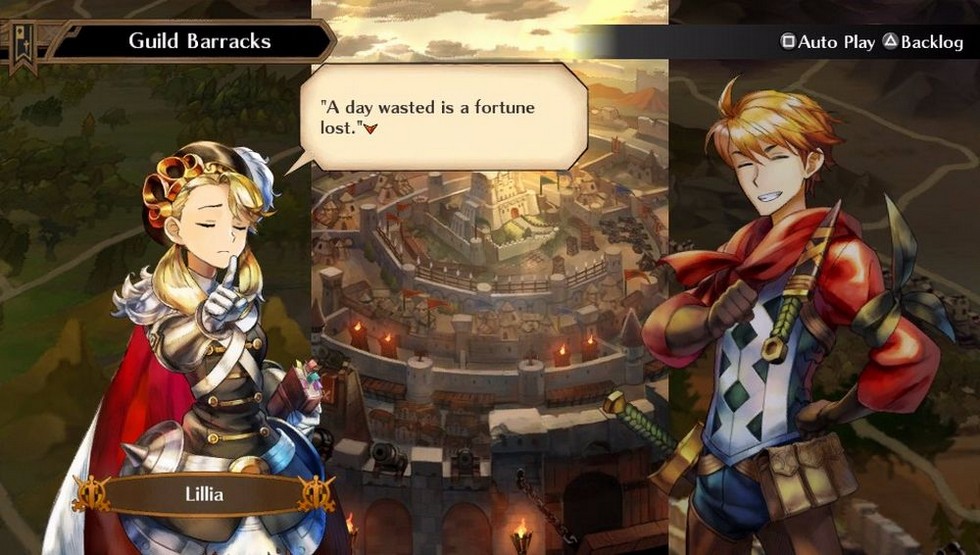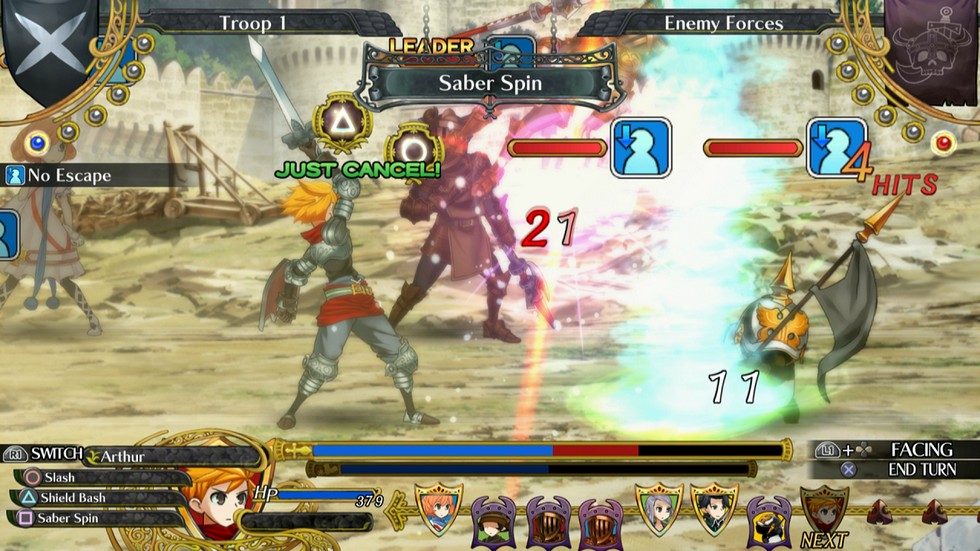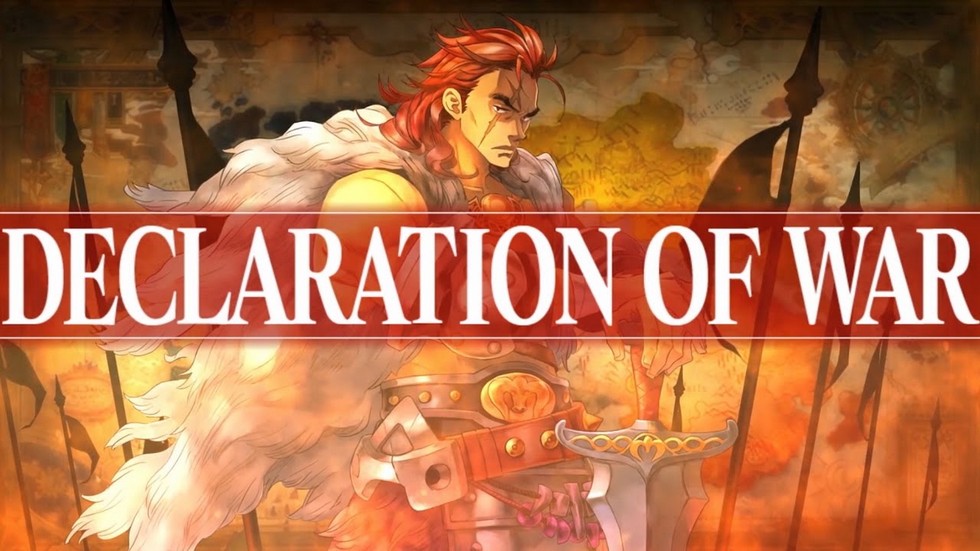An almost grand adventure.
Being a bit of an aficionado when it comes to JRPGs, I pay close attention to all the releases that make their way over to the States.
Grand Kingdom caught my eye in particular thanks to its art style which at first reminded me of those of Vanillaware, one of the best in the industry in terms of visual fidelity.
It wasn’t long before I learned that this was in fact not a game from Vanillaware but my interest was piqued, all the same.
So when I finally got my hands on Grand Kingdom, I went in knowing very little about how it played and after a full campaign, came away feeling equal parts impressed and disappointed.

My mercenary group was named, “Wolverines” so I could yell it as I went into battle.
Grand Kingdom weaves a tale of an exceptional mercenary group of the player’s choosing.
Every playable character in the roster is created from a list of classes which is randomized after every major quest.
There’s a nice variety of classes ranging from the classics like the Fighter who holds the frontline to the Dragon Mage which are magic powered casters riding giant dragons which can do damage both at close to far range.
With a total of 17 different classes to choose from, there’s a lot of room to mix up a party composition to fit the situation or rather that would be the case if leveling didn’t take so long.
Even though I wanted to, I found myself being pigeonholed into using the same party for the whole game after I spent a good deal of time of leveling them up.
I was able to recruit more characters over time but they didn’t receive any experience if they weren’t in the active party and even though I dispatched them out to automated fights in the war, the experience gain was so minimal that they never caught up in level to make them usable in active combat.
As for the combat itself, it’s turned based with a few twists on the formula by using a three lane battlefield where positioning plays an essential role.
Every ability has a specific range with only a certain amount of movement available per turn. Getting into the correct position to use the best attack for the situation is easy enough at the start but there are traps and obstacles that can make this quite difficult.
Most of the abilities require multiple button presses which must be timed correctly for the best effect and there’s also an element of creating multi-hit combos by chaining different strike attacks together.

The combat started out fun but became repetitive very quickly.
The combat can be tactical and satisfying at first but it wears out its welcome due to frequent and lengthy encounters.
The tedium could have been alleviated by allowing the player to build up multiple parties in tandem but due to how long it takes to level and how experience is distributed, I became rather bored of doing the exact same attacks on the same enemies with the same exact timing.
Even though the combat and character progression became negative factors in my enjoyment, the extensive multiplayer element was quite the welcome surprise.
The player is tasked with choosing a faction and taking up contracts to aid in their war efforts.
This the opens up a list of optional quests and the ability to actively join in on the battlefield where each faction launches campaigns to defend and take over territory.
Given JRPGs tend to not have any significant multiplayer elements, I was impressed with the implementation of the war contracts and it helped me feel as though I was part of a community instead of a lone player plowing through a single player campaign.
Lastly, the story itself was forgettable with predictable plot elements- further hindered due to the passive nature of the silent create-a-characters.

Taking up war contracts and fighting over territory amongst other players around the world was a welcome surprise to an otherwise typical JRPG.
Grand Kingdom features a vibrant and charming art style along with a surprisingly well implemented multiplayer mode. However, the lackluster story and repetitive combat that sits at the very core of the experience holds the game back from greatness.
Fun Tidbit – I always promote flexibility when it comes to party composition and when a title features so many interesting classes, I like to trying them out in full without spending hours just to make them usable.
Review copy of game provided by publisher.